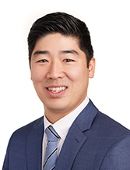- Acne
- Actinic Keratosis
- Aesthetics
- Alopecia
- Atopic Dermatitis
- Buy-and-Bill
- COVID-19
- Case-Based Roundtable
- Chronic Hand Eczema
- Chronic Spontaneous Urticaria
- Drug Watch
- Eczema
- General Dermatology
- Hidradenitis Suppurativa
- Melasma
- NP and PA
- Pediatric Dermatology
- Pigmentary Disorders
- Practice Management
- Precision Medicine and Biologics
- Prurigo Nodularis
- Psoriasis
- Psoriatic Arthritis
- Rare Disease
- Rosacea
- Skin Cancer
- Vitiligo
- Wound Care
News
Article
NB-UVB Phototherapy Demonstrates Efficacy, Leads to Complete Response in Prurigo Nodularis
Author(s):
Key Takeaways
- NB-UVB phototherapy demonstrated significant efficacy in prurigo nodularis, with 80% of patients achieving complete response and 20% partial response.
- Treatment involved dose adjustments based on erythema severity, with mild adverse effects reported in 13.3% of patients.
A study showed NB-UVB phototherapy effectively reduced prurigo nodularis symptoms, with 80% of patients achieving full response.
Narrowband UVB (NB-UVB) phototherapy is efficacious in patients with prurigo nodularis, according to a study published in Anais Brasileiros de Dermatologia.1
Researchers reported that a significant proportion of patients achieved complete response as a result of treatment.
Background and Methods
NB-UVB phototherapy has gained attention for its efficacy in reducing pruritus through anti-inflammatory and neuromodulatory effects.2
Given the nature of prurigo nodularis, researchers sought to examine NB-UVB’s effectiveness and safety in prurigo nodularis management.
The study included 30 patients diagnosed with prurigo nodularis, treated with NB-UVB phototherapy between 2011 and 2021. Patient data, including demographic information, comorbidities, lesion location, and treatment history, were gathered retrospectively from clinical records.
NB-UVB phototherapy was administered with the Daavlin Spectra 305/350 device. Treatment commenced at 70% of the patient’s minimal erythema dose, followed by incremental dose increases of 10% to 20%.
Dose escalation was halted in patients who developed moderate erythema, and treatment was suspended for those with severe erythema, resuming at a lower dose once erythema resolved. Phototherapy was given 3 times weekly, with reductions in frequency as patients responded.
Findings
Nearly half of the patients (46.6%) had histologically confirmed prurigo nodularis. Distribution of lesions varied, with 50% having peripheral involvement, 36.6% diffuse involvement, and 13.3% central involvement. Comorbidities were noted in 80% of participants, with common conditions including type 2 diabetes (46.6%) and psychiatric disorders (40%).
The average duration of NB-UVB phototherapy was 5.6 months, with an average of 45.7 sessions.
The majority of patients (80%) achieved a complete response, while 20% experienced partial responses.
Adverse effects were mild and included erythema and pruritus, affecting 13.3% of patients. None discontinued therapy due to adverse effects. Post-treatment follow-up data were available for 21 patients, among whom 23.8% experienced relapse within a year.
The study found no statistically significant differences in complete and partial response rates across demographic variables, such as age, gender, duration of disease, or comorbidities. Prior treatment history and cumulative doses did not significantly influence treatment response.
Conclusions
"NB-UVB phototherapy treatment is an effective and safe option when there is no satisfactory response to topical treatment in prurigo nodularis patients with comorbidities and multiple medications. Patients with diffuse and central involvement may achieve higher CR rates than patients with peripheral involvement," according to Agaoglu et al.
The study may have been limited due to its single-center and retrospective design.
Despite promising results, researchers noted that further research with larger patient populations is warranted to better understand long-term efficacy, relapse rates, and the potential role of combination therapies.
References
- Agaoglu E, Erdogan HK, Acer E, Saracoglu ZN. Efficacy and safety of narrowband ultraviolet B phototherapy for prurigo nodularis: a tertiary center experience. Anais Brasileiros de Dermatologia. 2024, ISSN 0365-0596,
https://doi.org/10.1016/j.abd.2024.02.007 - Kupsa R, Gruber-Wackernagel A, Hofer A, Quehenberger F, Wolf P, Legat FJ. Narrowband-ultraviolet B vs broadband-ultraviolet B in treatment of chronic pruritus: a randomized, single-blinded, non-inferiority study. Acta Derm Venereol. 2023;103:adv9403. Published 2023 Jun 26. doi:10.2340/actadv.v103.9403
Newsletter
Like what you’re reading? Subscribe to Dermatology Times for weekly updates on therapies, innovations, and real-world practice tips.












